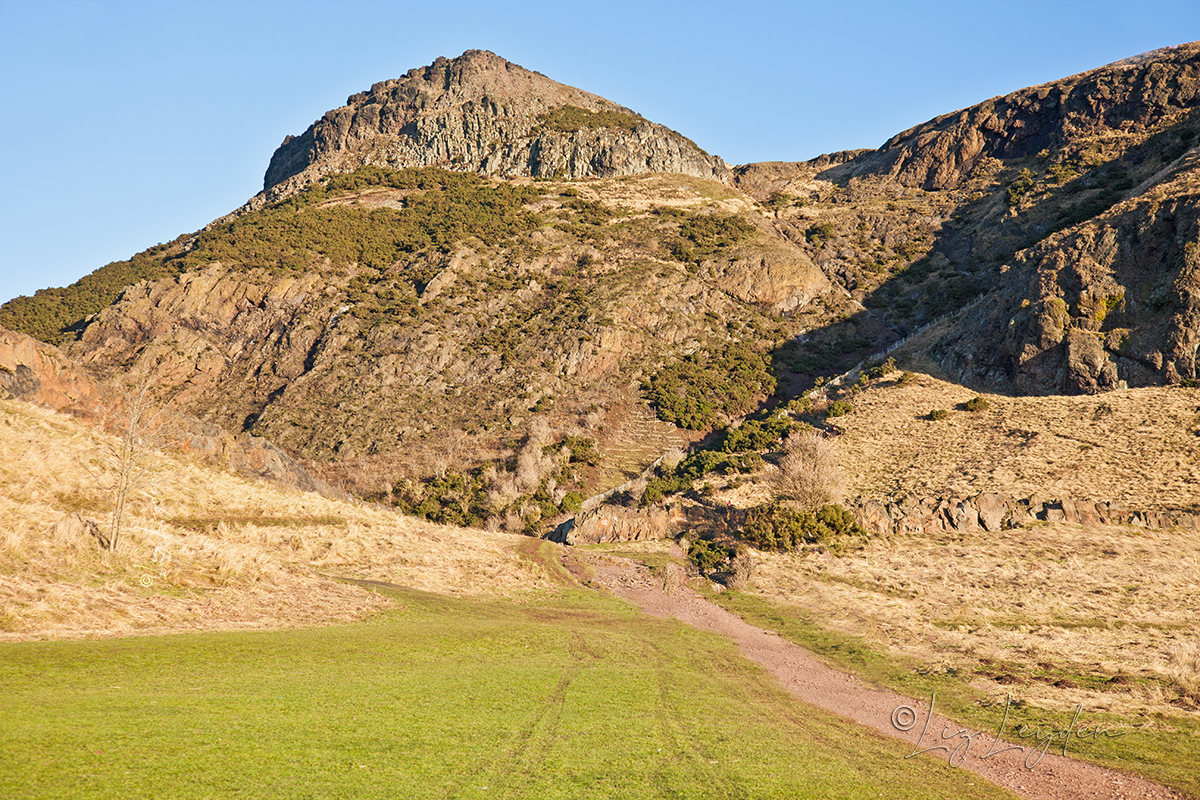One of several main paths leading to Arthur’s Seat, an extinct volcano in the south-east of Edinburgh, Scotland, which – because of the work of James Hutton – is one of the sources for modern geological thinking.
Together with Calton Hill and Edinburgh Castle Rock, Arthur’s Seat is an SSSI, (Site of Special Scientific Interest) designated to protect its important geology, grassland habitats and uncommon plant and animal species.
In the area now known as Holyrood Park, in which the 822’/250m hill is located, James Hutton (1726-1797) the “Father of Modern Geology”, observed that the deposition of the sedimentary and formation of the volcanic rocks must have occurred at different ages and in different ways than was currently believed. This fuelled his idea, revolutionary for the time, that the physical world’s remote history can be inferred from evidence in present-day rocks. His observations led him to believe that the Earth was constantly being formed, eroded and reformed; eg, molten matter is forced up into mountains, eroded, and then the eroded sediments are washed away. He called this the Great Geological Cycle.
Behind and overhead, lie the Queen’s Park, from Muschat’s Cairn to Dumbiedykes, St. Margaret’s Loch, and the long wall of Salisbury Crags: and thence, by knoll and rocky bulwark and precipitous slope, the eye rises to the top of Arthur’s Seat, a hill for magnitude, a mountain in virtue of its bold design. This upon your left. Upon the right, the roofs and spires of the Old Town climb one above another to where the citadel prints its broad bulk and jagged crown of bastions on the western sky.
Edinburgh Picturesque Notes, Robert Louis Stevenson, 1878
This image is copyright © Liz Leyden, all rights reserved.
It is for sale as wall art or as various home or personal accessories at Pixels.com.
A different photo of the same angle with people walking on the path is available to purchase for use as an editorial stock photo from iStock.


